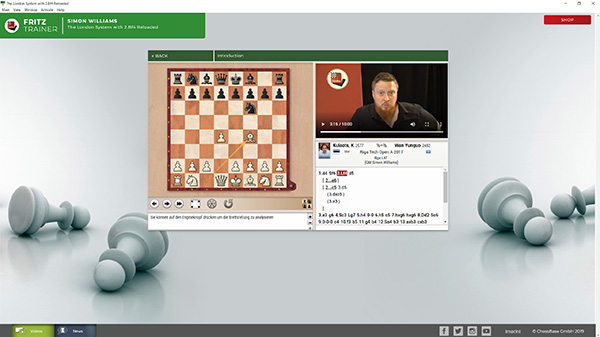
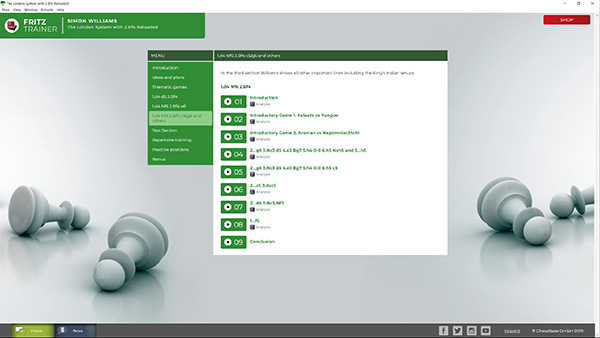

• Video running time: 7 hours 16 minutes (English)
• With interactive training including video feedback
• Extra: Further Training chapter with repertoire and play features
• Including ChessBase Reader
Tactic Toolbox London System
The London System is becoming increasingly popular, both at grandmaster and club level. The theory of the opening is developing quickly, with new things being tested all the time. This, in return, gives rises to fresh tactical ideas which should belong to the basic arsenal of any London devotee – after all, tactics remains the be-all and end-all of the game. On this DVD, Simon Williams shows all the complications in the London System one has to know as White, giving you the tactical tools for a successful practice – the player who knows the typical motifs has an advantage over the board. Using the interactive FritzTrainer format which invites the viewer to answer questions by entering the moves on the screen, the “Ginger GM“, intensively and systematically, makes your familiar with a multitude of typical tactical finesses in positions of the London System. Of course, those who don’t yet have this opening in their repertoire can also profit – after all, a sharp combinatorial vision is always useful in chess.


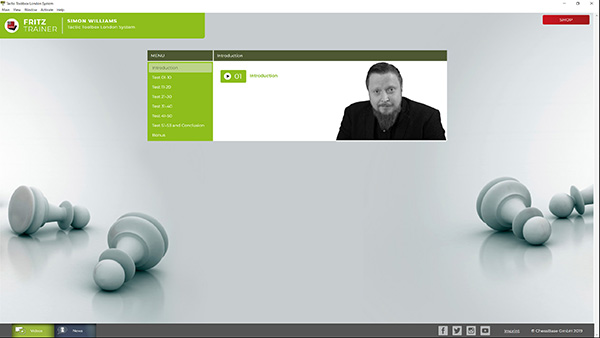
• Video running time: 3 hours 14 min(English)
• With interactive training including video feedback
• Bonus: Further database with 82 games and 154 training questions
London System Powerbook 2021
This way of starting the game has long since shed its image as an opening for amateurs, world class players like So, Kramnik, Grischuk, Vachier-Lagrave, Aronian and Karjakin play the opening with both colours, and included in the basis for the London Book there are also 126 games by Magnus Carlsen. In order to guarantee a high degree of reliability in the statistics a threshold for the acceptance of games and parts of games was set at 2300. Thus the Powerbook is based on 263 000 engine games and also 32 000 games from Mega 2021 + Correspondence Database 2020.
One of the basic positions of the London System occurs after the most frequently played moves by both sides: 1.d4 d5 2.Nf3 Nf6 3.Bf4 c5 4.e3 Nc6 5.Nbd2 e6 6.c3 Bd6 7.Bg3 0-0 8.Bd3 b6 and is presented in the following image:
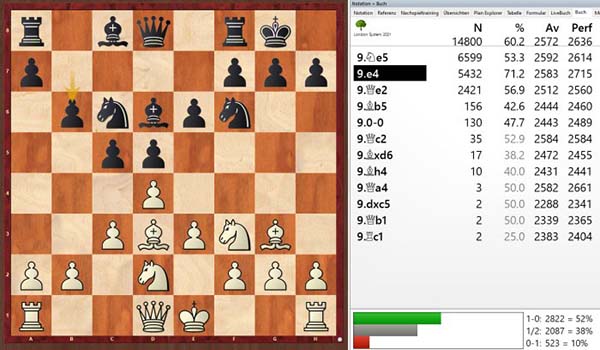
What strikes the eye is the move 9.e4!?’s statistics. The early opening of the centre is actually not quite in the spirit of the London System, but of course its success is justification for White. But perhaps you prefer to study the modern variation 5.Nbd2 Qb6 6.dxc5 Qxb2. Here the Powerbook offers you statistics based on more than 18 000 games – here human theory has to be content with 450 games.
London System Powerbase 2021
The database contains a total of 7482 games where the average rating of the players is at least 2500 (apart from annotated games and games played by specialists). Among the annotators there are some world-famous names such as Adhiban, Edouard, Giri, Kasimdzhanov, Meier, Nielsen, Nihal and more.

A double click on the database loads an overview of the games. A further double click and relevant game is loaded. Via the Players tag the games can be sorted by frequency (with the tag Total). There Gata Kamsky heads the list with 414 games, followed by Boris Grachev with 303 games. But world champion Magnus Carlsen is also represented by 125 games. It is worth taking a look at the games of the absolute top proponents of this system. For example, pay attention to the games of Baadur Jobava and Eric Prié.
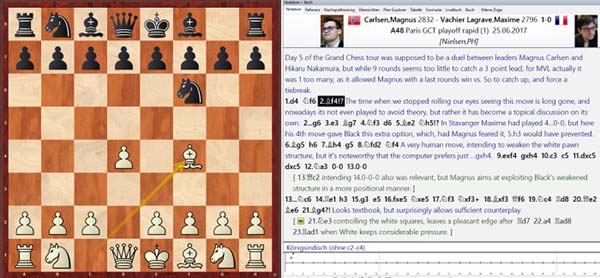
The games can be played through or further investigated with an engine or a Powerbook.











